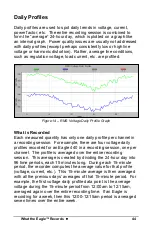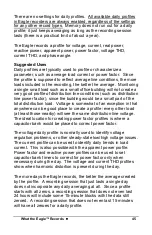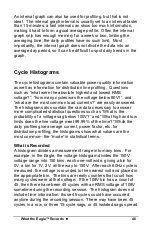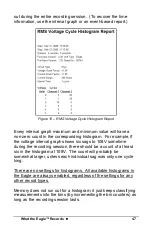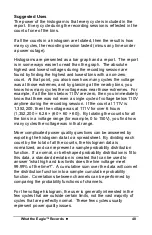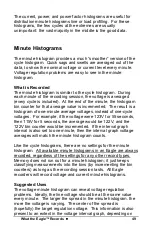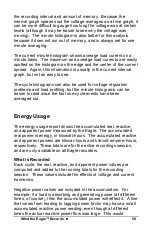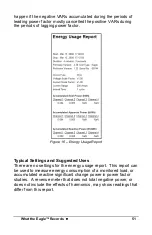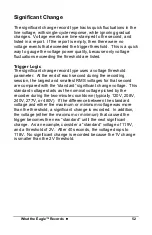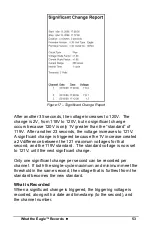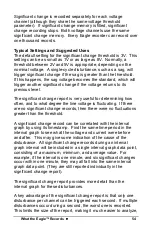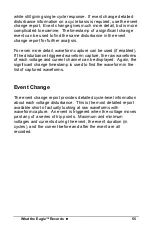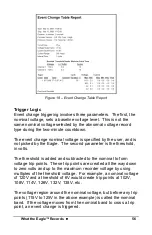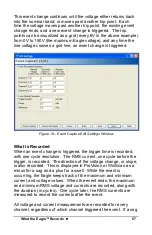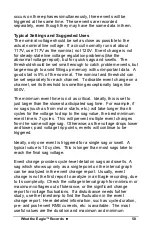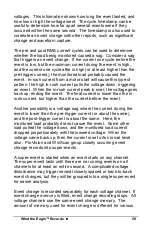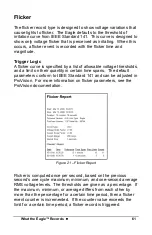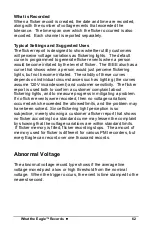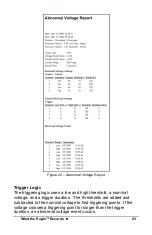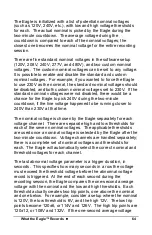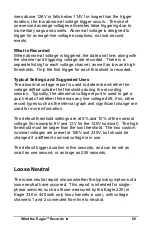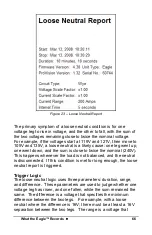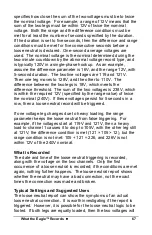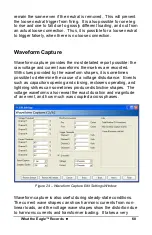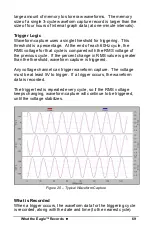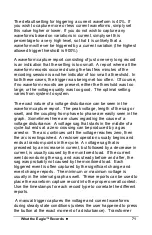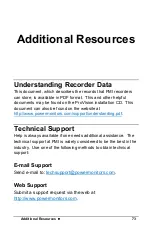
What the Eagle™ Records
••••
58
occurs on three-phases simultaneously, three events will be
triggered at the same time. These events are recorded
separately, even though they may have the same data in them.
Typical Settings and Suggested Uses
The nominal voltage should be set as close as possible to the
actual nominal line voltage. If a circuit normally runs at about
117V, use 117V as the nominal, not 120V. Event change is not
for steady-state line voltage regulation problems (like the
abnormal voltage report), but for quick sags and swells. The
threshold should be set small enough to catch problem events, but
large enough to avoid filling up memory with unimportant data. A
good start is 5% of the nominal. The nominal and threshold can
be set separately for each channel. To disable event change on a
channel, set its threshold to something exceptionally large, like
500V.
The minimum event time is not as critical. Ideally, this is set to
just larger than the slowest anticipated sag time. For example, if
no sags (such as from motor starts, etc.) will take longer than 6
cycles for the voltage to drop to the sag value, the best minimum
event time is 7 cycles. This will prevent multiple event changes
from the same voltage sag. Otherwise, as the voltage drops lower
and lower, past voltage trip points, events will continue to be
triggered.
Ideally, only one event is triggered for a single sag or swell. A
typical value is 10 cycles. This is longer than most sags take to
reach the final sag voltage.
Event change provides cycle-level detail on sags and swells. A
sag which shows up only as a single point on the interval graph
can be analyzed in the event change report. Usually, event
change is not the first report to analyze in an Eagle recording, due
to its complexity. Check the voltage interval graph for minimum or
maximum voltages out of tolerance, or the significant change
report for voltage fluctuations. If a disturbance needs further
study, use the timestamp to find the fluctuation in the event
change report. Here detailed information, such as cycle duration,
pre- and post-event RMS currents, etc. is available. The most
useful values are the duration and maximum and minimum

